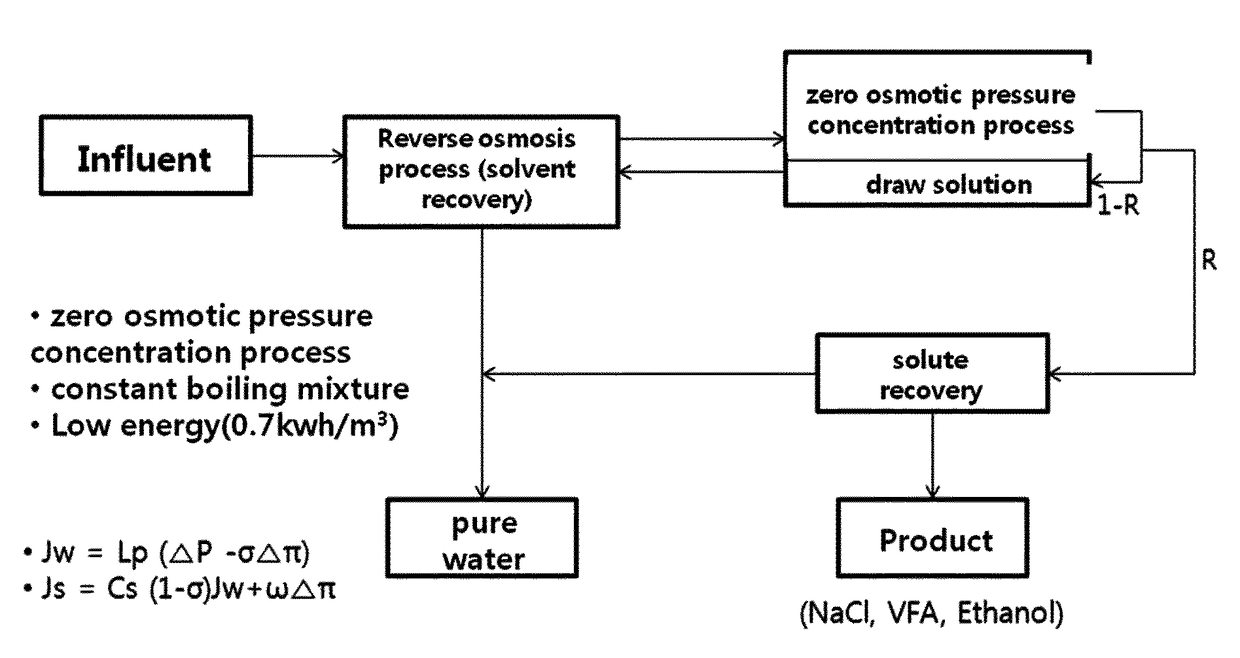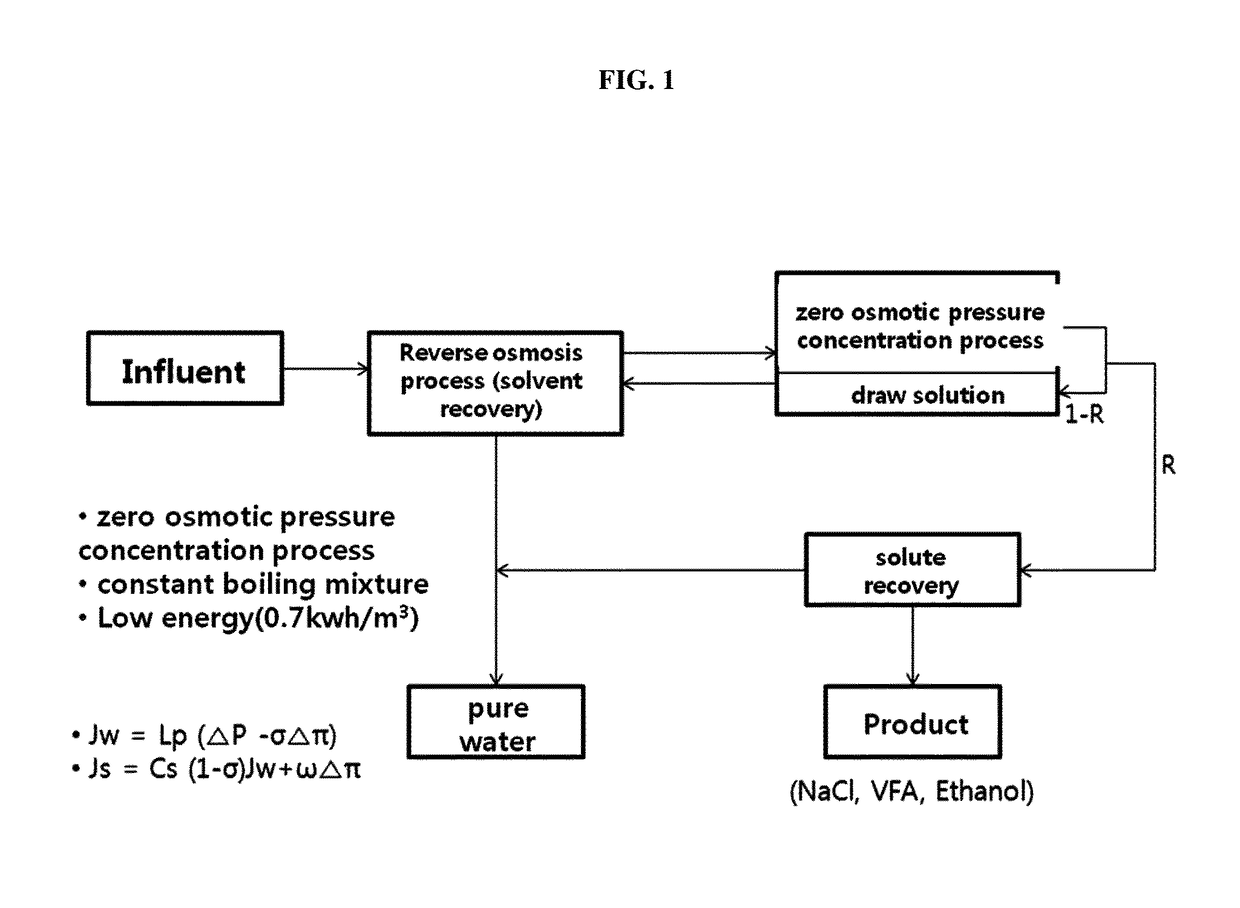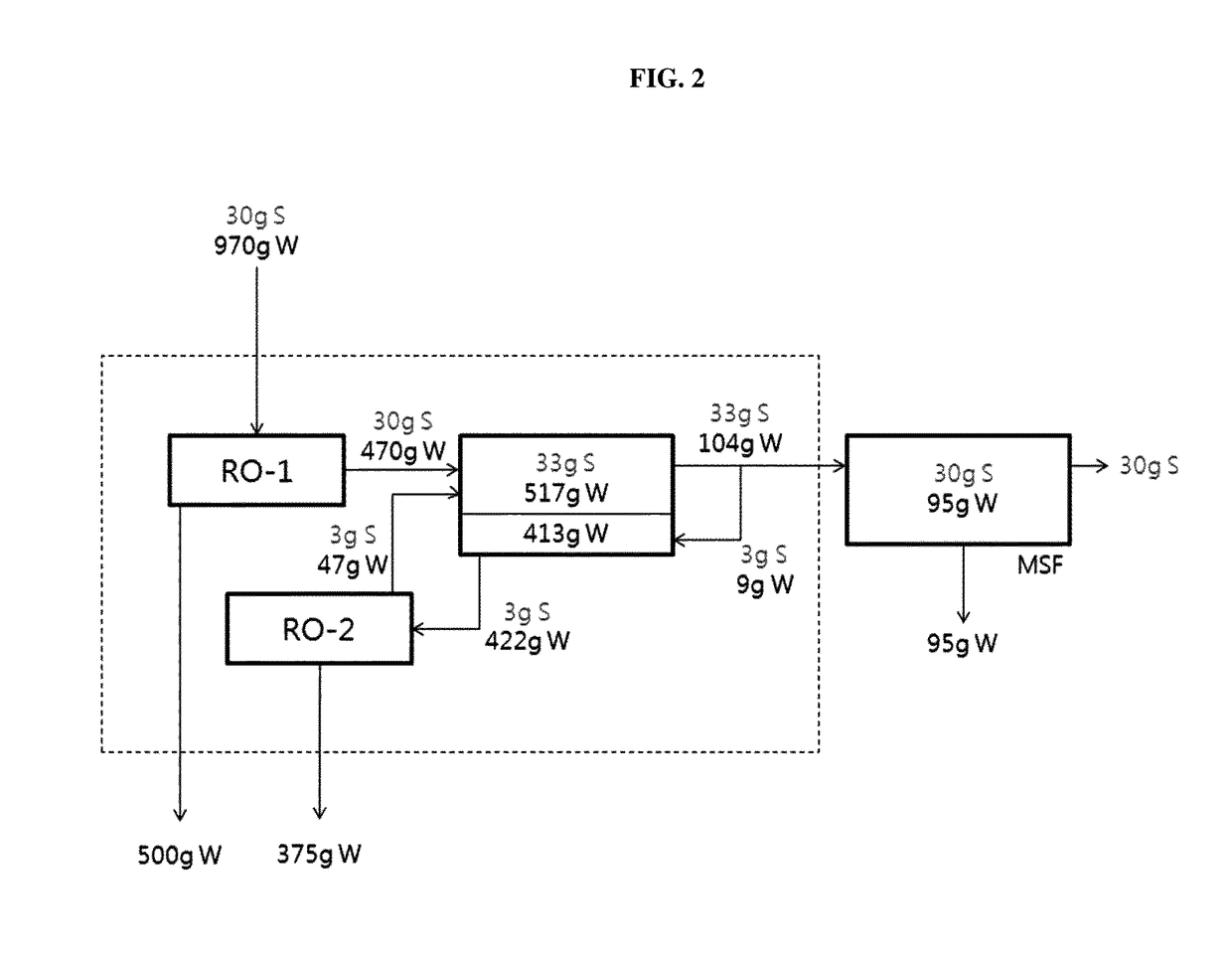Method for concentrating aqueous containing solute into high concentration by hydraulic-membrane process under no difference in osmotic pressure
a technology of concentrating aqueous solution and concentrating solution, which is applied in the direction of water/sewage treatment, osmosis/dialysis, bioreactor/fermenter specific use, etc. it can solve the problems of inability to further concentrate feed solution or increase utility, solute in draw solution is diffused back into, etc., to achieve the effect of maximizing concentration and minimizing energy and management costs
- Summary
- Abstract
- Description
- Claims
- Application Information
AI Technical Summary
Benefits of technology
Problems solved by technology
Method used
Image
Examples
example 1
tion of NaCl Aqueous Solution Using Zero Osmotic Pressure Difference Concentrator
[0102]In the system as shown in FIG. 6A, a sample (NaCl aqueous solution) was placed, and pressure was applied thereto. The amount (weight) of sample that passed from high-pressure chamber A to chamber B (atmospheric pressure) through an RO membrane for a given time was measured.
[0103]The membrane used in this Example was RE2521-TL (Woongjin Chemical Co., Ltd., Seoul, Korea; http: / / www.csmfilter.com), which is a thin-film composite type RO membrane which is used in a negatively charged, polyamide, spiral-wound module. The membrane has a permeability of 1.1 m3 / day and an effective area of 1.1 m2. It rejects 99% of 1,500 mg / L at 1.0 MPa, and shows a maximum pressure of 4.14 MPa, a maximum flow rate of 1.36 m3 / hr, and a minimum flow rate (concentrate) of 0.23 m3 / hr. It has a maximum temperature of 45° C. and a pH of 3.0-10.0, and can also resist a pH of 2.0-11.0.
[0104]500 ml of an NaCl solution having the ...
example 2
tion of VFA-Na Aqueous Solution Using Zero Osmotic Pressure Difference Concentrator
[0109]Using the membrane and test system used in Example 1 (concentration of NaCl), an experiment was performed using volatile fatty acid-Na as a sample under the following zero osmotic pressure difference conditions.
[0110]
TABLE 3Concentration of VFA-Na under zero osmoticpressure difference conditionsVFA (Feed concentration - Draw concentration),22.77 wt %~22.77%WaterResidualConcentrationOperationPressurePermeationSolutionofCondition(bar)F-VFA(ml)(ml)D-VFAw-Fluxrejection (%)22.77-22.775147.42.17497.83296.180.107910010147.42.98497.02296.660.148210020147.43.95496.05297.240.196410030147.44.11495.89297.340.2044100All the units are given in grams, w-flux = amount of water permeated / area · time (g / (m2 · h)).
[0111]As can be seen in Table 3 above, 1000 g of water contains 294.8 g (22.77 wt %) of VFA-Na. The molar concentration of VFA-Na is 3.73 M. The osmotic pressure is 67 bar. At the same molar concentratio...
example 3
tion Process (FO) Under Zero Osmotic Pressure Difference Condition
[0112]Using pressure-assisted osmosis, an experiment on the concentration of NaCl solution was performed. The membrane used in the forward osmosis process was a cartridge (Hydration Technologies, USA) made of cellulose triacetate.
[0113]In a conventional forward osmosis process, a solute having high osmotic pressure is used in a draw chamber, but in this Example, the same solute as that used in the feed chamber was used in the draw chamber. The following experiment can be an experiment on the application of a zero osmotic pressure difference to forward osmosis.
[0114]Specifically, as a feed solution, NaCl solutions corresponding to 80% (287 g / L) and 60% (215 g / L) of the solubility of NaCl (359 g / L) were used, as a draw solution, 100% (359 g / L) NaCl aqueous solution was used. The draw solution was used in the experiment after it was adjusted to pH 8 using ammonia water, and an external pressure of 20 psi (1.36 atm, 1.38 ...
PUM
| Property | Measurement | Unit |
|---|---|---|
| concentration | aaaaa | aaaaa |
| concentration | aaaaa | aaaaa |
| energy | aaaaa | aaaaa |
Abstract
Description
Claims
Application Information
 Login to View More
Login to View More - R&D
- Intellectual Property
- Life Sciences
- Materials
- Tech Scout
- Unparalleled Data Quality
- Higher Quality Content
- 60% Fewer Hallucinations
Browse by: Latest US Patents, China's latest patents, Technical Efficacy Thesaurus, Application Domain, Technology Topic, Popular Technical Reports.
© 2025 PatSnap. All rights reserved.Legal|Privacy policy|Modern Slavery Act Transparency Statement|Sitemap|About US| Contact US: help@patsnap.com



